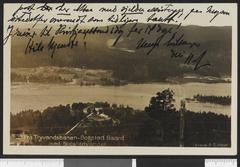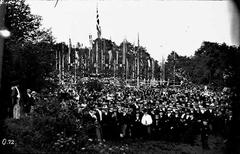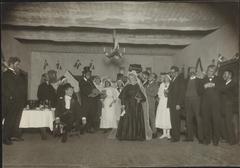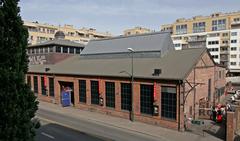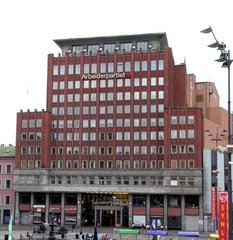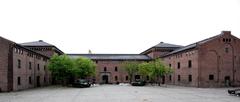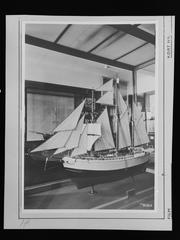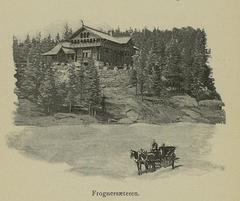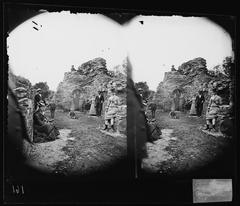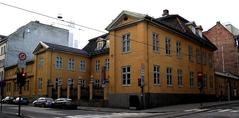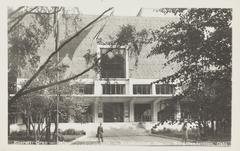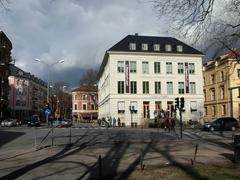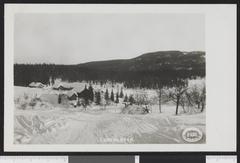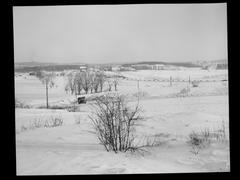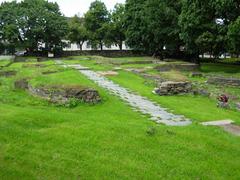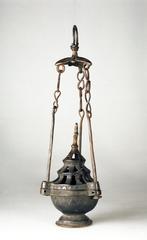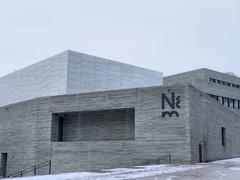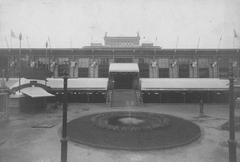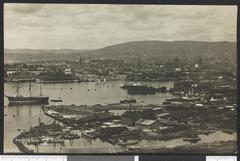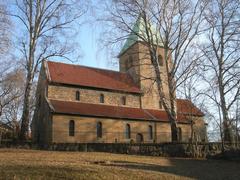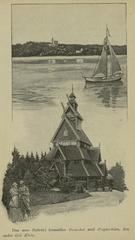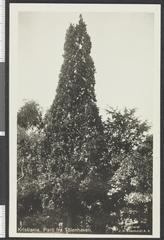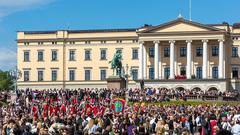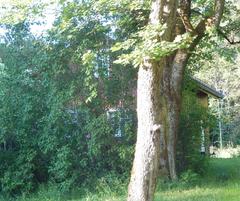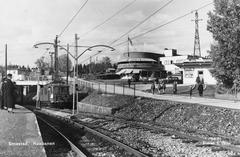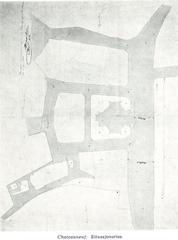Old Bishop’s Palace Oslo: Visiting Hours, Tickets, and Historical Sites Guide
Date: 04/07/2025
Introduction: Discovering the Old Bishop’s Palace in Oslo
Located in Oslo’s historic Gamlebyen (Old Town) district, the Old Bishop’s Palace (Oslo Bispegård) stands as a remarkable symbol of Norway’s medieval past. Dating back to the 12th century, this site served as the official residence of the Bishop of Oslo, playing a pivotal role in both religious and political life. Today, its blend of Romanesque, Gothic, and Baroque architectural elements offers visitors a unique window into centuries of Norwegian history. The palace’s close proximity to other medieval landmarks—including the ruins of St. Hallvard’s Cathedral and St. Mary’s Church—enriches its historical context, making it an essential stop for anyone interested in Oslo’s cultural heritage.
Whether you’re drawn to the intricate stonework, fascinated by church-state relations, or eager to explore Oslo’s medieval roots, the Old Bishop’s Palace offers an immersive and educational experience. This guide provides comprehensive information on visiting hours, ticketing, accessibility, guided tours, and nearby attractions, helping you make the most of your visit. For the latest updates and detailed guidance, consult the Medieval Park Official Website and Oslo Visitor Centre.
Table of Contents
- Introduction
- History and Site Layout
- Architectural Features
- Key Interior Spaces
- Practical Visitor Information
- Preservation and Restoration
- Notable Highlights
- Visitor Experience
- FAQs
- Conclusion
- Visuals & Media Suggestions
- Related Links
- Call to Action
History and Site Layout
First constructed in the 12th century, the Old Bishop’s Palace originally housed the city’s bishop and evolved into a complex of residential quarters, administrative offices, ceremonial halls, and defensive structures. The palace’s development over the centuries was shaped by fires, wars, and the Reformation, resulting in a unique architectural blend. Its layout, adjacent to Oslo Cathedral and other ecclesiastical buildings, highlights its central role in both the religious and civic life of medieval Oslo.
Architectural Features
Romanesque Foundations
The earliest structures exhibit characteristic Romanesque attributes—thick stone walls, small rounded windows, and sturdy vaulted ceilings. These features provided necessary protection in a city where wooden structures were prone to fire.
Gothic and Baroque Additions
In the 13th and 14th centuries, the palace expanded with Gothic elements such as pointed arches, ribbed vaults, and larger windows, particularly in the chapel and ceremonial halls. Later Baroque influences introduced decorative flourishes and more elaborate interiors, reflecting shifts in ecclesiastical power and artistic taste.
Defensive Elements
The palace also functioned as a fortress, with fortified walls, arrow slits, gatehouses, and, at times, a moat. Its strategic location near the city walls and Akerselva river enhanced its defensive capabilities during periods of unrest.
Key Interior Spaces
- Residential Quarters: The bishop’s apartments featured wooden floors, fireplaces, and decorative carved details.
- Ceremonial and Administrative Halls: Used for synods, legal proceedings, and official gatherings, these rooms were often decorated with tapestries and period furnishings.
- Chapel: Evolving from a simple oratory to a more elaborate Gothic space, the chapel featured vaulted ceilings and stained glass (much of which has not survived).
- Service Areas: Kitchens, storerooms, and servant quarters supported the daily life of the palace.
Practical Visitor Information
Opening Hours & Tickets
- Hours: Generally open daily from 10:00 AM to 5:00 PM, with extended hours during the summer (June–August). Seasonal variations may apply; always check the Medieval Park official website for the latest details.
- Tickets: Entrance to the archaeological site and palace is typically NOK 80 for adults. Discounts are available for students and seniors; children under 16 usually enter free. Tickets can be purchased on-site or online (Oslo Heritage Official Site).
Guided Tours & Special Events
Guided tours are offered daily during peak season, providing insights into the palace’s history and architecture. Special events, exhibitions, and educational programs—including the Oslo Medieval Festival—are held throughout the year. Refer to the official websites for up-to-date event schedules.
Accessibility
The site is accessible via public transport, with bus and tram stops near Gamlebyen. Parking is limited, so public transit is recommended. While much of the site is accessible, uneven terrain and narrow staircases may pose challenges for some visitors. Virtual tours and detailed models are available for those with limited mobility.
Photography Tips
Photography is permitted in most areas, but flash and tripods are prohibited to protect delicate structures. For the best lighting and fewer crowds, visit early in the day.
Preservation and Restoration
Ongoing archaeological excavations have revealed foundations and artifacts dating from the 12th to 16th centuries. Restoration efforts balance the preservation of original masonry with the reconstruction of lost features, ensuring that the site remains accessible and educational for future generations.
Notable Highlights
- Vaulted Ceilings: Original medieval stone vaults showcase impressive craftsmanship.
- Decorative Stonework: Surviving carved capitals, window tracery, and fresco fragments hint at the palace’s former grandeur.
- Ecclesiastical Integration: The palace’s design and proximity to religious sites underscore its importance in Oslo’s church community.
Visitor Experience
Visitors can explore well-marked paths among standing structures and archaeological remains, supported by interpretive panels and multimedia guides. The Old Bishop’s Palace features in many self-guided walking tours of Old Oslo and is a highlight of the Medieval Park.
Frequently Asked Questions (FAQs)
Q: What are the current opening hours?
A: Typically 10:00 AM–5:00 PM daily, with possible seasonal changes. Confirm on the Medieval Park website.
Q: How much does entry cost?
A: Around NOK 80 for adults; discounts are available. Children under 16 often enter free.
Q: Are guided tours available?
A: Yes, especially in the summer, in both Norwegian and English.
Q: Is the site wheelchair accessible?
A: Some areas are challenging due to uneven terrain, but virtual tours are available.
Q: How do I get there?
A: Easily reached by bus and tram; parking is limited.
Q: Can I take photos inside?
A: Yes, but no flash or tripods are allowed.
Q: Are there special events?
A: Yes—lectures, concerts, and the Oslo Medieval Festival are held periodically. Check the Visit Oslo events calendar.
Conclusion
The Old Bishop’s Palace is not just a historical site but a living testament to Oslo’s evolution from a medieval ecclesiastical stronghold to a modern capital. Its architectural features, curated tours, and proximity to other landmarks make it an essential destination for history lovers and casual travelers alike. Plan your visit by checking current opening hours, ticketing options, and event schedules, and deepen your experience with guided tours or the Audiala app’s audio guides.
Suggested Visuals & Media
- High-resolution images of vaulted ceilings and chapel remains (with alt text, e.g., “Old Bishop’s Palace Oslo medieval vaulted ceiling”).
- Site maps marking key areas.
- Links to virtual tours or 3D models on the Medieval Park website.
Related Links
- Medieval Park Official Website
- Oslo Visitor Centre
- Oslo Heritage Official Site
- Oslo Medieval Festival
- Audiala App
Call to Action
Ready to explore the Old Bishop’s Palace and more of Oslo’s historical treasures? Download the Audiala app for guided audio tours, exclusive content, and up-to-date event information. Follow us on social media for travel tips and heritage stories. Begin your journey into Oslo’s rich medieval past today!
References
- This guide draws on official resources for the most accurate and current information: Oslo Heritage Official Site, Medieval Park Official Website, Oslo Visitor Centre.

